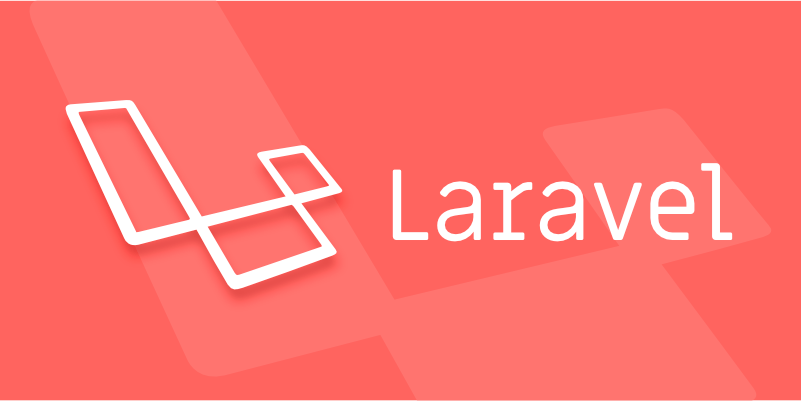How to use Laravel Dusk for browser testing?
Jul 29, 2025 am 02:14 AMLaravel Dusk simplifies browser automation testing, running directly with ChromeDriver without Selenium or JDK. 1. Install: composer requires --dev laravel/dusk, and then run php artisan dusk:install. 2. Create a test: php artisan dusk:make LoginTest, use visit(), type(), press(), and assertPathis() to simulate user operations in the test. 3. Common methods include click(), check(), select(), attach(), waitFor(), assertSee(), etc. 4. Run the test: php artisan dusk. If it fails, you can debug through screenshot() and console logs. 5. Configure .env.dusk.local to set up an independent test environment. 6. Best practices: Use page-based organization logic, single-test single scenarios, use waitFor() to reduce fluctuations, and run in headless mode in CI/CD. Finally, the test is executed through php artisan dusk and the result is generated.

Laravel Dusk is a powerful tool for running browser automation and testing, making it easy to interact with your application just like a real user would—clicking buttons, filling forms, navigating pages, and asserting content. It uses ChromeDriver by default and doesn't require JDK or Selenium, which makes setup simpler than older tools.

Here's how to get started and use Laravel Dusk effectively.
? Install and Set Up Laravel Dusk
First, install Dusk via Composer:

composer requires --dev laravel/dusk
Then register the service provider (in Laravel 10 and earlier, this may be needed):
php artisan dusk:install
This creates a tests/Browser directory and a sample test.

Note: In Laravel 11 , Dusk may be included by default, and the structure is slightly different.
? Write Your First Browser Test
Generate a new browser test:
php artisan dusk:make LoginTest
This creates tests/Browser/LoginTest.php .
Edit it to test a login flow:
<?php
namespace Tests\Browser;
use Laravel\Dusk\Browser;
use Tests\DuskTestCase;
class LoginTest extends DuskTestCase
{
public function testBasicExample()
{
$this->browse(function (Browser $browser) {
$browser->visit('/login')
->type('email', 'user@example.com')
->type('password', 'password')
->press('Login')
->assertPathIs('/dashboard');
});
}
}In this example:
-
visit()goes to the login page. -
type()fills in input fields by name or selector. -
press()clicks a button with matching text. -
assertPathIs()checks the URL after login.
? Useful Dusk Browser Methods
Here are common methods you'll use:
-
visit('/url')– Navigate to a page. -
click('selector')– Click an element. -
type('field', 'value')– Fill input fields. -
check('checkbox')/uncheck()– Handle checkboxes. -
select('dropdown', 'option')– Choose from a select. -
attach('file_input', '/path/to/file.jpg')– Upload a file. -
waitFor('.selector')– Wait for an element to appear. -
assertSee('text')– Assert text is on the page. -
assertVisible('.selector')– Assert element is visible. -
assertPathIs('/expected/path')– Confirm current URL.
You can also use CSS selectors or Dusk's magic short syntax:
$browser->type('#email', 'test@example.com'); // CSS selector $browser->check('terms'); // by name
?? Run the Tests
Make sure Chrome is installed. Then run:
php artisan dusk
Dusk will:
- Launch Chrome (via ChromeDriver).
- Run your tests.
- Output results in the terminal.
If you get errors about ChromeDriver version, update it:
php artisan dusk:chrome-driver
You can also specify a version:
php artisan dusk:chrome-driver 125
? Testing in Different Environments
By default, Dusk runs on http://127.0.0.1:8000 . You can change the base URL by setting APP_URL in your .env.dusk.local file:
APP_URL=http://myapp.test
Dusk automatically uses .env.dusk.local during testing, so your database or other settings won't be affected.
Create
.env.dusk.localand keep it out of version control.
? Debugging with Screenshots and Console Logs
If a test fails, Dusk can take a screenshot and record console logs.
Enable it in your test class:
protected function failed($method)
{
$this->browse(function ($browser) use ($method) {
$browser->storeScreenshot($method);
$browser->script('return console.logs');
});
parent::failed($method);
}Or manually take a screenshot:
$browser->screenshot('login_error');
Screenshots are saved in tests/Browser/screenshots .
? Best Practices
Use page classes for complex apps. Group common actions (like login, navigation):
php artisan dusk:page Login
Keep tests focused: one test per scenario.
Avoid flaky tests by using
waitFor()before interacting with dynamic content.Run Dusk in CI/CD using headless Chrome (set via environment or Dusk options).
Basically, Laravel Dusk simplifies browser testing by giving you an expressive API to simulate real user behavior—no Selenium setup needed. Just write tests, run php artisan dusk , and let Chrome do the rest.
The above is the detailed content of How to use Laravel Dusk for browser testing?. For more information, please follow other related articles on the PHP Chinese website!

Hot AI Tools

Undress AI Tool
Undress images for free

Undresser.AI Undress
AI-powered app for creating realistic nude photos

AI Clothes Remover
Online AI tool for removing clothes from photos.

Clothoff.io
AI clothes remover

Video Face Swap
Swap faces in any video effortlessly with our completely free AI face swap tool!

Hot Article

Hot Tools

Notepad++7.3.1
Easy-to-use and free code editor

SublimeText3 Chinese version
Chinese version, very easy to use

Zend Studio 13.0.1
Powerful PHP integrated development environment

Dreamweaver CS6
Visual web development tools

SublimeText3 Mac version
God-level code editing software (SublimeText3)

Hot Topics
 Creating Custom Validation Rules in a Laravel Project
Jul 04, 2025 am 01:03 AM
Creating Custom Validation Rules in a Laravel Project
Jul 04, 2025 am 01:03 AM
There are three ways to add custom validation rules in Laravel: using closures, Rule classes, and form requests. 1. Use closures to be suitable for lightweight verification, such as preventing the user name "admin"; 2. Create Rule classes (such as ValidUsernameRule) to make complex logic clearer and maintainable; 3. Integrate multiple rules in form requests and centrally manage verification logic. At the same time, you can set prompts through custom messages methods or incoming error message arrays to improve flexibility and maintainability.
 Adding multilingual support to a Laravel application
Jul 03, 2025 am 01:17 AM
Adding multilingual support to a Laravel application
Jul 03, 2025 am 01:17 AM
The core methods for Laravel applications to implement multilingual support include: setting language files, dynamic language switching, translation URL routing, and managing translation keys in Blade templates. First, organize the strings of each language in the corresponding folders (such as en, es, fr) in the /resources/lang directory, and define the translation content by returning the associative array; 2. Translate the key value through the \_\_() helper function call, and use App::setLocale() to combine session or routing parameters to realize language switching; 3. For translation URLs, paths can be defined for different languages ??through prefixed routing groups, or route alias in language files dynamically mapped; 4. Keep the translation keys concise and
 Working with pivot tables in Laravel Many-to-Many relationships
Jul 07, 2025 am 01:06 AM
Working with pivot tables in Laravel Many-to-Many relationships
Jul 07, 2025 am 01:06 AM
ToworkeffectivelywithpivottablesinLaravel,firstaccesspivotdatausingwithPivot()orwithTimestamps(),thenupdateentrieswithupdateExistingPivot(),managerelationshipsviadetach()andsync(),andusecustompivotmodelswhenneeded.1.UsewithPivot()toincludespecificcol
 Sending different types of notifications with Laravel
Jul 06, 2025 am 12:52 AM
Sending different types of notifications with Laravel
Jul 06, 2025 am 12:52 AM
Laravelprovidesacleanandflexiblewaytosendnotificationsviamultiplechannelslikeemail,SMS,in-appalerts,andpushnotifications.Youdefinenotificationchannelsinthevia()methodofanotificationclass,andimplementspecificmethodsliketoMail(),toDatabase(),ortoVonage
 Understanding and creating custom Service Providers in Laravel
Jul 03, 2025 am 01:35 AM
Understanding and creating custom Service Providers in Laravel
Jul 03, 2025 am 01:35 AM
ServiceProvider is the core mechanism used in the Laravel framework for registering services and initializing logic. You can create a custom ServiceProvider through the Artisan command; 1. The register method is used to bind services, register singletons, set aliases, etc., and other services that have not yet been loaded cannot be called; 2. The boot method runs after all services are registered and is used to register event listeners, view synthesizers, middleware and other logic that depends on other services; common uses include binding interfaces and implementations, registering Facades, loading configurations, registering command-line instructions and view components; it is recommended to centralize relevant bindings to a ServiceProvider to manage, and pay attention to registration
 Understanding Dependency Injection in Laravel?
Jul 05, 2025 am 02:01 AM
Understanding Dependency Injection in Laravel?
Jul 05, 2025 am 02:01 AM
Dependency injection automatically handles class dependencies through service containers in Laravel without manual new objects. Its core is constructor injection and method injection, such as automatically passing in the Request instance in the controller. Laravel parses dependencies through type prompts and recursively creates the required objects. The binding interface and implementation can be used by the service provider to use the bind method, or singleton to bind a singleton. When using it, you need to ensure type prompts, avoid constructor complications, use context bindings with caution, and understand automatic parsing rules. Mastering these can improve code flexibility and maintenance.
 Strategies for optimizing Laravel application performance
Jul 09, 2025 am 03:00 AM
Strategies for optimizing Laravel application performance
Jul 09, 2025 am 03:00 AM
Laravel performance optimization can improve application efficiency through four core directions. 1. Use the cache mechanism to reduce duplicate queries, store infrequently changing data through Cache::remember() and other methods to reduce database access frequency; 2. Optimize database from the model to query statements, avoid N 1 queries, specifying field queries, adding indexes, paging processing and reading and writing separation, and reduce bottlenecks; 3. Use time-consuming operations such as email sending and file exporting to queue asynchronous processing, use Supervisor to manage workers and set up retry mechanisms; 4. Use middleware and service providers reasonably to avoid complex logic and unnecessary initialization code, and delay loading of services to improve startup efficiency.
 Handling exceptions and logging errors in a Laravel application
Jul 02, 2025 pm 03:24 PM
Handling exceptions and logging errors in a Laravel application
Jul 02, 2025 pm 03:24 PM
The core methods for handling exceptions and recording errors in Laravel applications include: 1. Use the App\Exceptions\Handler class to centrally manage unhandled exceptions, and record or notify exception information through the report() method, such as sending Slack notifications; 2. Use Monolog to configure the log system, set the log level and output method in config/logging.php, and enable error and above level logs in production environment. At the same time, detailed exception information can be manually recorded in report() in combination with the context; 3. Customize the render() method to return a unified JSON format error response, improving the collaboration efficiency of the front and back end of the API. These steps are






